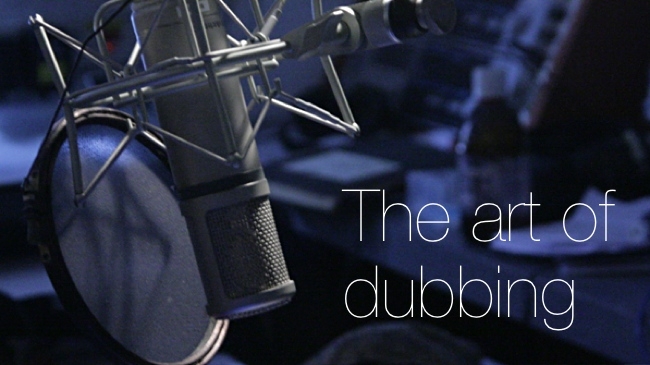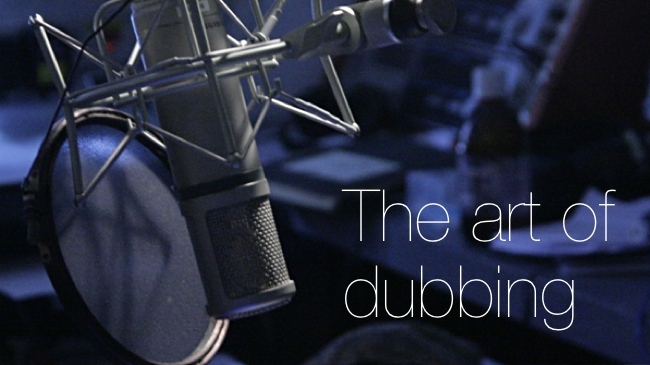
 The art of Dubbing
The art of Dubbing
Dubbing is a bigger part of movie making than you might think. If it's well done, you never know it's happened. Phil Rhodes lifts the veil on this dark art
While we were waiting for a very noisy helicopter to fly by, someone of my acquaintance once described television as “radio with pictures”. At the time, in the middle of a complicated shoot, this seemed ungenerous, but perhaps we're being unfair. Cameras can exclude things with great precision simply by framing them out. Nobody knows, while watching a historical drama, that there's a “no parking” sign barely out of shot. However, a considerably more distant jet aeroplane can make the audio recorded for that scene anachronistically unusable even if it doesn't make the dialogue unintelligible. In short, we don't often consider the fact that while modern microphones can have good rejection of off-axis sound, none of them is nearly as perfect in excluding its surroundings as a camera and a lens.
So, much as it pains me to say it, the sound department is frequently short-changed, and technologically less able to do anything about it. Therefore, call it what you will; looping, ADR, or dubbing is often essential. There are reports of actors and directors who value the opportunity to tweak performances, though few people really relish trying to recreate a performance in sync with the original take. What's more, there can be a terrible lack of opportunity for the actor to prepare and get into the character, especially months after principal photography.
ADR, as an actor recently opined to me, sucks.
Various approaches to timecode synchronisation are possible, especially with software such as the incredibly cost-effective Reaper digital audio workstation which is capable of decoding timecode from a spare audio input and recording dubbed takes onto various tracks. Unfortunately, unless we consider exotic setups which are capable of producing timecoded rushes on set, this really only works with something approaching a locked edit, and many quick-and-dirty configurations designed for near-set use will simply use a laptop to play back the video with the original production audio. In this case, recording wild to a field audio recorder, synchronisation would be dealt with by eye in a nonlinear editor, especially where there's a need to trim, stretch and edit for good overall sync.
Equipment
The equipment configuration required to implement all the microphones and headphones can become quite involved. Everyone involved needs to hear the actor, the playback of both the original production audio and the recorded audio, plus any direction, and the mix of those things needs to be controllable for each person. In a portable setup, we used an Apogee Mini-Me preamp and A/D converter both as a high quality mic preamp and audio output device for the laptop which was playing the original production audio. It's unfortunate that they're discontinued, as they allow for a variable mix of the two to be sent to headphones and seem almost designed for ADR on the road, but the same effect could be achieved with a simple desktop mixer.
That, though, is about as technical as we're going to get, because most of ADR is about helping someone produce a performance in such an alien situation. Adequate time to prepare, perhaps in concert with the rest of the cast from the scene, should be a given. The director should, if at all possible, be present, or at least someone assigned the authority to direct the ADR session.
And it wouldn't be fair to write about dubbing without mentioning that most awkward of experiences – the vocal effects pass. Anyone who's been involved in the audio post of an action movie will be familiar with the half hour where the unfortunate cast member gets to stand motionless in a comfortable studio and make the sort of noises they'd make if they were being, variously, chased, shot, blown up, thrown off a cliff, and burned alive. The problem with this is that almost all of these can, after a few minutes, be construed to sound like the sort of noises people make while enjoying the intimate and sweaty companionship of a very close friend.
No snickering at the back, though, because poor sound is a bugbear of independent film. It is no longer difficult to cobble together circumstances under which someone can be recorded while watching video playback. What's hard is getting the actors to sound as if they are, for instance, charging through a futuristic city shooting at someone when in fact they're sitting in a tent made of duvets, staring at a monitor, while someone shouts in their ears about “more energy”.
Tags: Technology


Comments